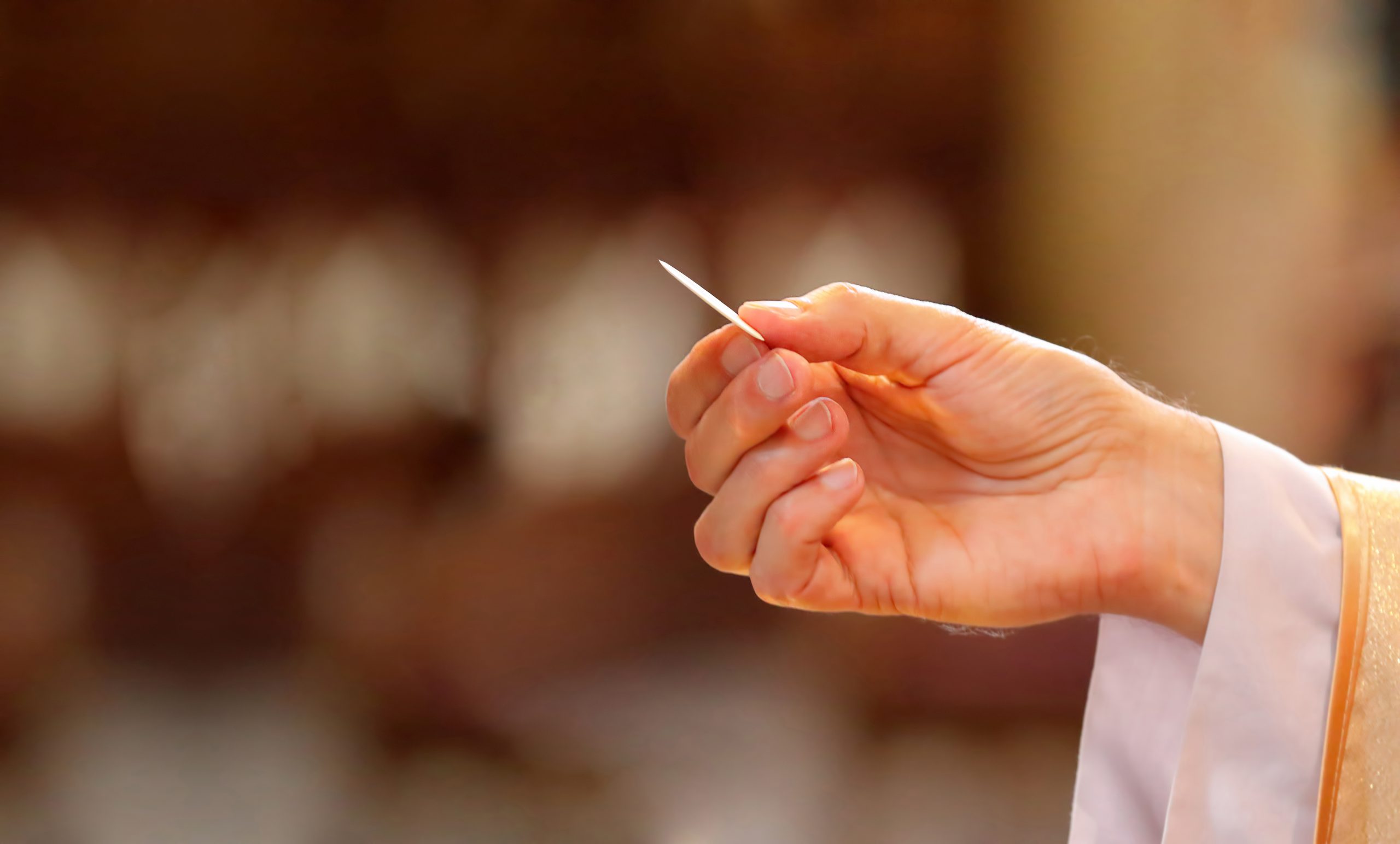
Adobe Stock_by wideonet
Q. Can you explain the proper way to genuflect towards the Eucharist, as well as the proper way to receive Holy Communion?
We’ve received a few questions along these and similar lines over the last few months, which is not surprising given that we are in the midst of the National Eucharistic Revival. As we prepare to celebrate anew Jesus’ birth, it seems fitting to talk about how we offer him adoration in gesture and in the reception of Holy Communion. (Fun fact: there’s a fascinating foreshadowing of the Eucharist in Luke’s account of Jesus’ birth. We’re told that Mary laid Jesus in a manger, which is a feeding trough for animals, an early hint at how Jesus would provide spiritual nourishment by giving himself to us in the Holy Eucharist.)
We’ll begin with a couple introductory remarks. First and foremost, we must remember the why of questions like this: why do we genuflect toward the Eucharist? Why are we concerned with how to receive Holy Communion? The answer is simple: because the Eucharist is Jesus himself, the Second Person of the Trinity, God himself.
And that leads to the second introductory remark: because Jesus is God himself, we worship him, we adore him, with all of our being, both soul and body. We express ourselves with our bodies, and that includes our adoration of our God. Just as we might use a certain gesture (a wave of a hand) to indicate a warm greeting, so, too, do we use another gesture (bending one knee to the ground) to indicate adoration.
A final introductory remark: it’s also important to remember that the meaning of gestures is somewhat culturally dependent. In other words, the way that, for example, adoration is conveyed in one culture might be different from how it is conveyed in another. And this can be true within the same broad tradition. For example, while for many Catholics the gesture of adoration is genuflection, for some Catholics (those who practice one of the Eastern Rites), adoration is often conveyed by a deep bow at the waist.
With those remarks in mind, let’s turn now to genuflection. As already noted, the purpose of genuflecting is to give adoration to God. So, when we enter a church or a chapel where a tabernacle is, we genuflect towards the tabernacle as an act of adoration of Jesus, who is present therein. (Many Catholics grow up thinking we are genuflecting towards the altar, but that’s only because of the common physical proximity between the altar and the tabernacle; the latter is always the focus of our genuflection. The altar is certainly a holy object, which is why we bow toward it, but we genuflect to God.)
It’s important to know that there is no formal teaching about how one is to genuflect, but over time, certain customs have evolved. Specifically, adoration is shown by genuflecting with the right knee. (Historically, one would show one’s allegiance to an earthly ruler by genuflecting with the left knee.) In addition, it’s common to do a “double genuflection” (kneeling on both knees for a moment) when the Eucharist is exposed in a monstrance, as a greater sign of adoration.

As with all such actions, it’s important that body and soul be united in intention. We ought not genuflect merely out of habit or custom, but we ought to do so with an awareness of why we are doing so—to greet Jesus with an act of humble submission to him as our Lord.
Similar points apply to the reception of Holy Communion. Again, the specific form of reception—either on the tongue or in the hand—has varied over time. But in this case, the Church can and does specify how one is to receive. While most of us are used to being able to receive in either mode, the ability to receive on the hand is something a bishop permits in his diocese (as most bishops in the U.S. have), while receiving on the tongue requires no special permission from the bishop (see, for example, St. John Paul II’s Letter Deminicae Cenae [On the Mystery and Worship of the Eucharist], n. 11.9 and the General Instruction on the Roman Missal, nn. 160-161).
Similarly, while most of us today are accustomed to receive Communion while standing, it is permitted to receive while kneeling as well (some churches have and use their Communion rail for this purpose).
As noted with genuflecting, it’s crucial that body and soul have the same intention. Whatever the mode or posture of reception, we ought to have awe and gratitude for what is happening: we are receiving Jesus Christ himself into our body and soul in Holy Communion.
Finally, it’s important that we avoid making rash judgments about others in these matters. We are unable to read their hearts, and therefore, we ought not draw any conclusions nor make any judgments because of their mode or posture of reception.
As we continue through the Eucharistic Revival and as we approach the great feast of Christmas, may we rejoice in Jesus’ presence among us, and in both body and soul, may we cry out together “O come, let us adore him!”


